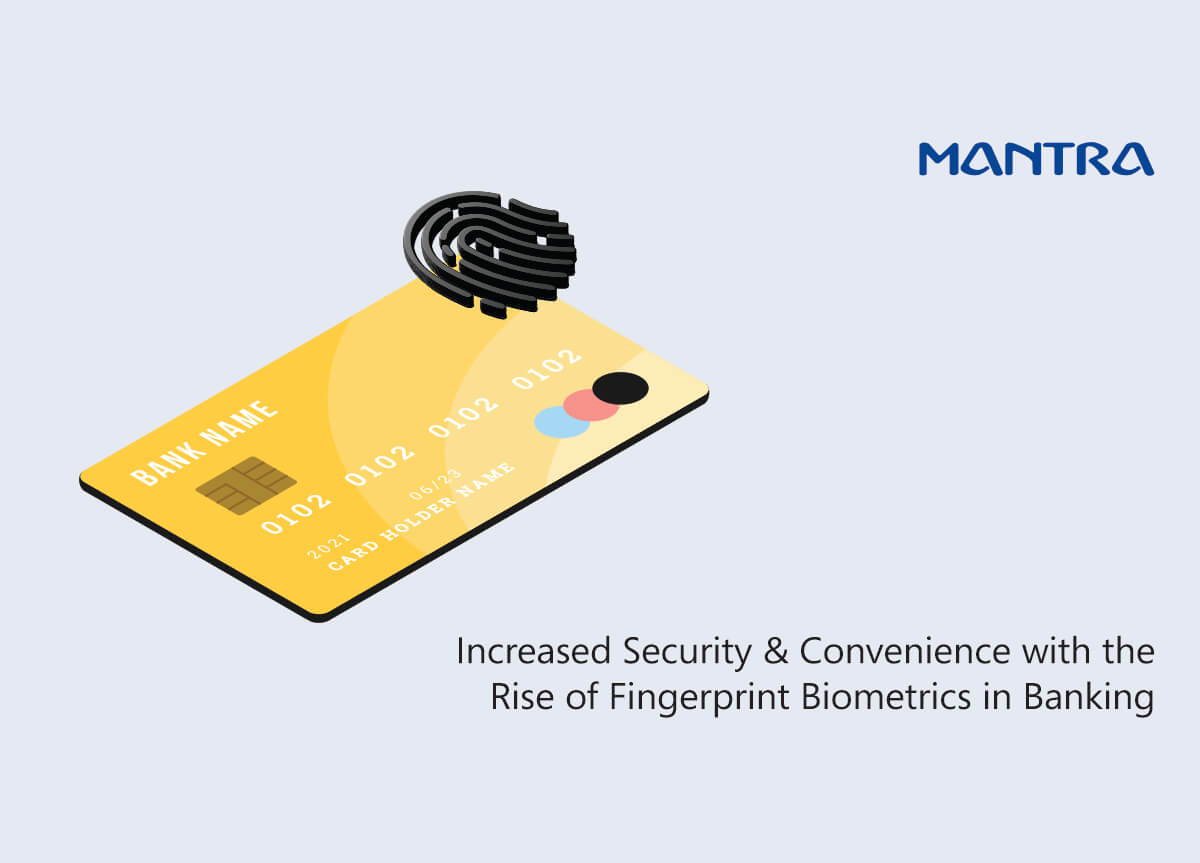
In today's digital era, banks are relentlessly seeking to improve security while streamlining consumer experiences. The adoption of fingerprint biometrics is a notable technological advancement that is propelling this transition. This article explores why institutions worldwide are turning to fingerprint biometrics for improved biometric identity verification.
Evolution of Biometric Identity Verification
Traditional identity verification methods, such as PINs and passwords, are increasingly vulnerable to intrusions and fraud. In response, financial institutions are searching for more secure and user-friendly alternatives, and biometric authentication has emerged as a viable option.
Biometric authentication uses distinctive physical or behavioral characteristics, such as fingerprints, to confirm an individual's identity. The reliability and convenience of fingerprint recognition distinguish it from other biometric modalities.
The Principal Benefits of Fingerprint Biometrics
1. Individuality and Consistency
The uniqueness of each individual's fingerprint makes it an ideal biometric identifier. Unlike passwords, which can be forgotten or stolen, fingerprints remain constant throughout a person's existence.
2. Protection
Biometrics based on fingerprints provide a high level of security. Even identical twins have unique fingerprints, assuring that only authorized users have access to accounts and sensitive data.
3. Advantage
Fingerprint recognition is extremely intuitive. For authentication, customers no longer need to remember complex passwords or transport physical tokens. They can swiftly and securely access their accounts with a single touch.
4. Swiftness
The lightning-fast speed of fingerprint authentication enables consumers to complete transactions and gain account access in mere seconds. This expediency enhances the banking experience altogether.
The Global Adoption of Fingerprint Biometrics in Banking
Enhanced Security:Constantly under threat from cyberattacks and fraud schemes are banks around the globe. It is extremely difficult for malicious actors to impersonate consumers when fingerprint biometrics provide an additional layer of security.
Compliance with Regulatory Standards:Numerous nations and regions have enacted stringent regulations governing the identity verification of financial sector customers. Fingerprint biometrics assist financial institutions in meeting these compliance requirements while also ensuring a seamless consumer experience.
Reduced Fraud and Operating Expenses:By implementing fingerprint biometrics, banks can reduce fraud-related losses significantly. In addition, the expedited authentication procedure reduces operational expenses related to password resets and security token management.
Customer Trust and Loyalty:Providing strong security measures and a convenient banking experience inspires customer confidence. Customers are more likely to remain loyal to banks that prioritize customer security.
Overcoming Challenges in Fingerprint Biometrics
1. Privacy Issues
Biometric data collection and storage necessitate stringent privacy measures to prevent unauthorized access to consumer information.
2. Costs of Technology Adoption
Initial expenditures for fingerprint biometric technology can be considerable. Banks must evaluate the cost-benefit ratio with great care.
3. Data Security
Banks must guarantee the highest levels of data security to prevent breaches or misuse of biometric data.
Perspectives for Fingerprint Biometrics
The use of fingerprint biometrics in banking is projected to increase. The following describes the future of this technology:
Multi-Factor Biometrics:For even greater security and adaptability, institutions may incorporate additional biometric modalities, such as facial recognition or voice recognition, in addition to fingerprints.
Continual Authentification:Continuous authentication techniques, such as monitoring a user's behavior during a session, will become more widespread in order to detect and prevent fraud in real time.
Improved User Experience:Fingerprint biometrics will continue to evolve to offer an intuitive and effortless user experience. This incorporates enhanced recognition speed and precision.
Incorporation of New Technologies:Fingerprint biometrics will likely combine with emergent technologies such as blockchain to create even more secure and tamper-resistant authentication systems.
Summary
The global banking industry's shift toward fingerprint biometrics is motivated by a desire to increase security, enhance consumer experiences, and meet regulatory compliance requirements. Fingerprint recognition offers a unique combination of security, convenience, and speed that aligns precisely with these objectives.
As global banks continue to invest in and refine fingerprint biometric technology, consumers can anticipate a safer and more user-friendly banking experience. The era of forgotten passwords and cumbersome authentication procedures is coming to an end, as fingerprint biometrics replace them with their simplicity and dependability.
The fingerprint has become the key to banking's future in this era of digital transformation. It is a symbol of trust, safety, and convenience in the financial world, not just a mark on our fingertips.
The proliferation of fingerprint biometrics in banking demonstrates the industry's dedication to innovation and customer-centricity. As technology continues to advance, banking will become more secure and convenient for consumers around the world.
abdul mohamed
kindly contact us we are looking for biometric solution for banking
Reply